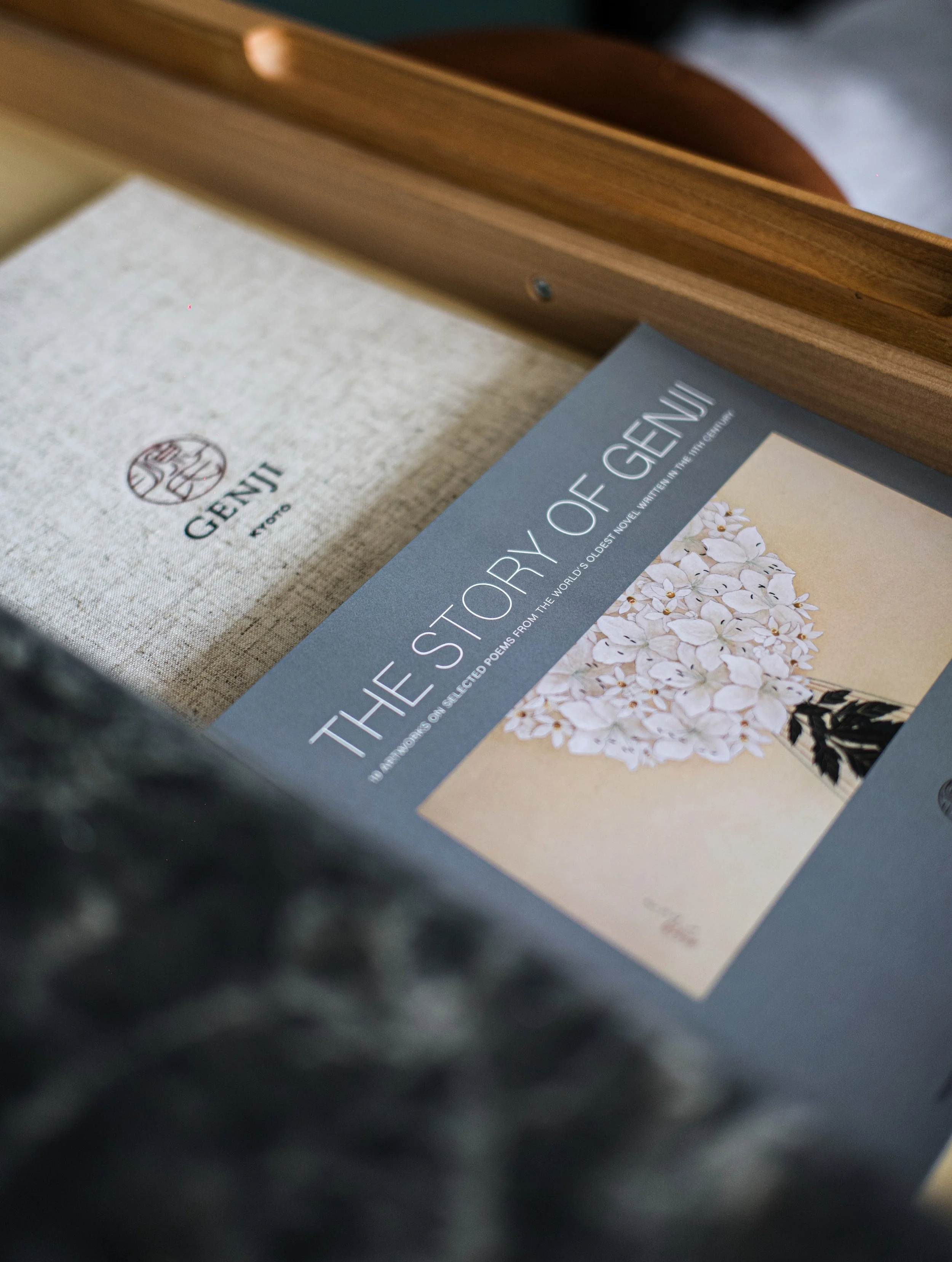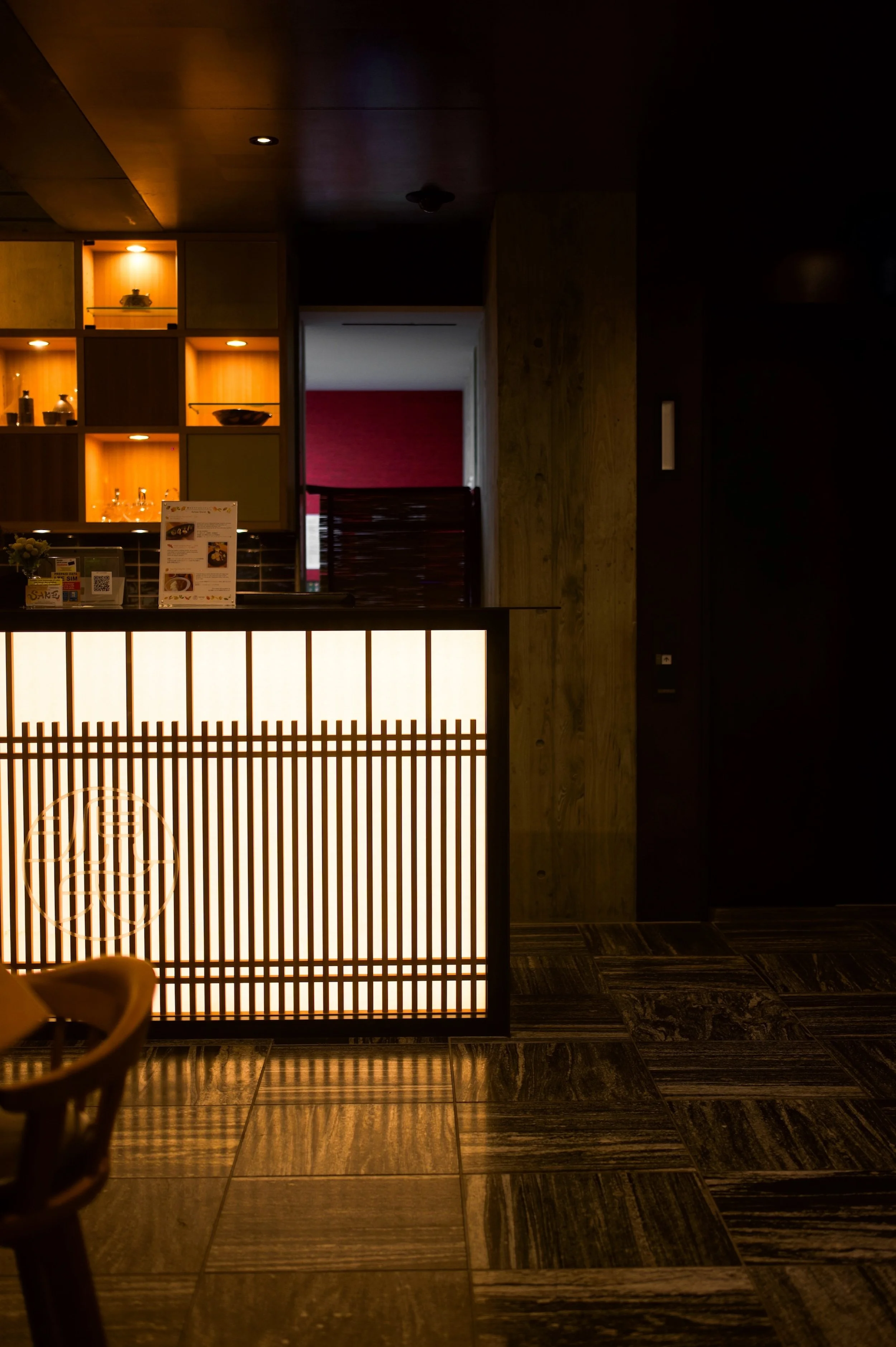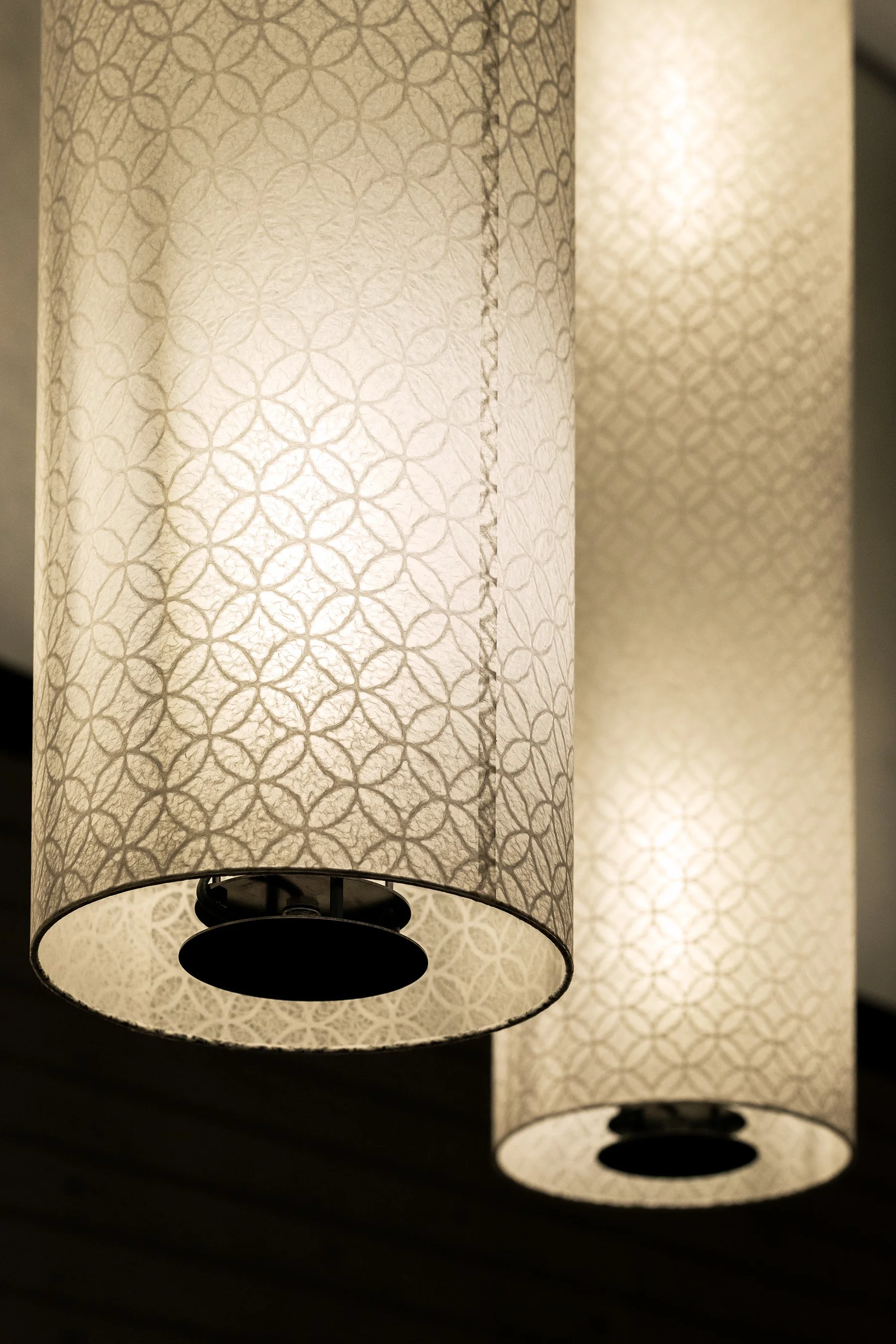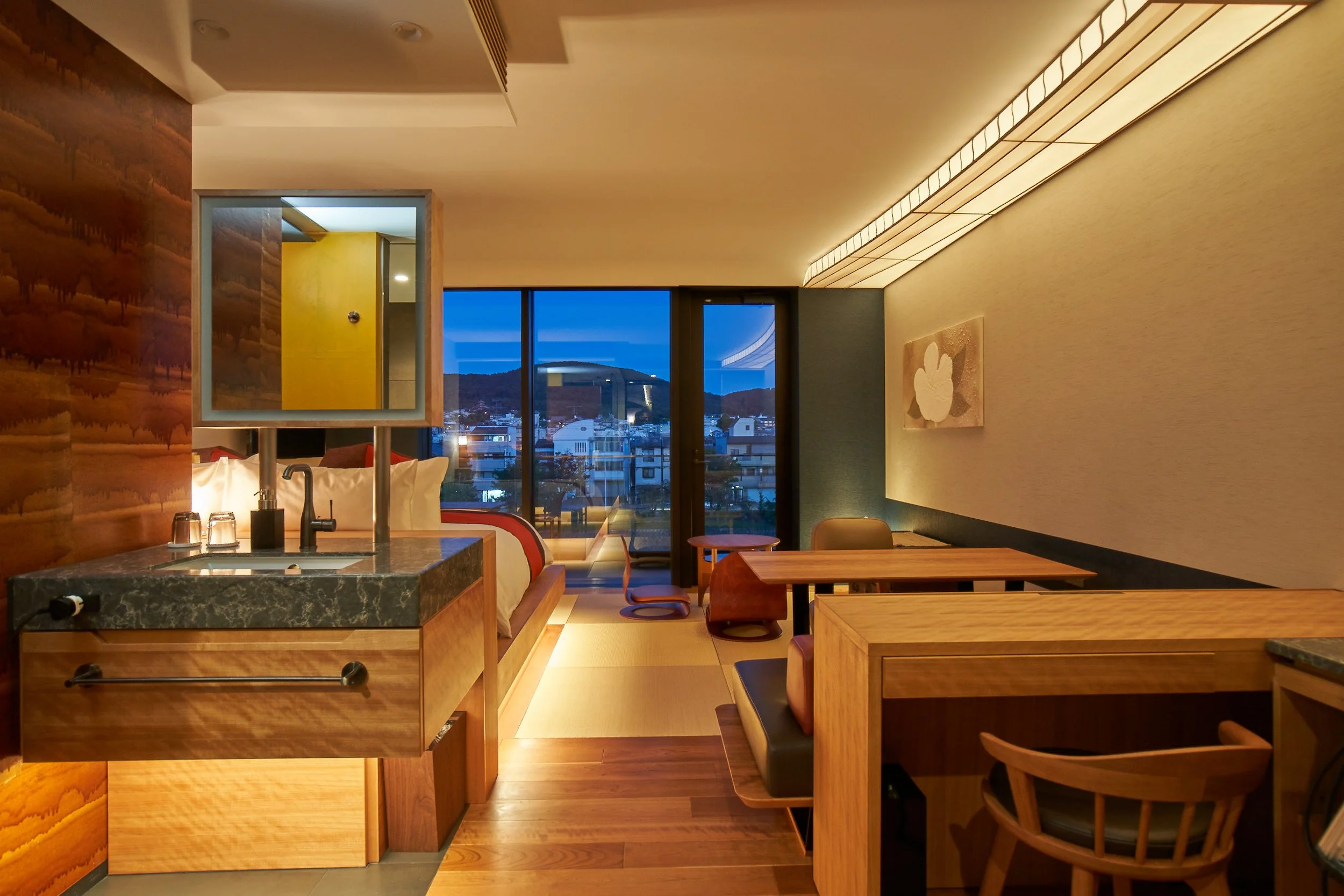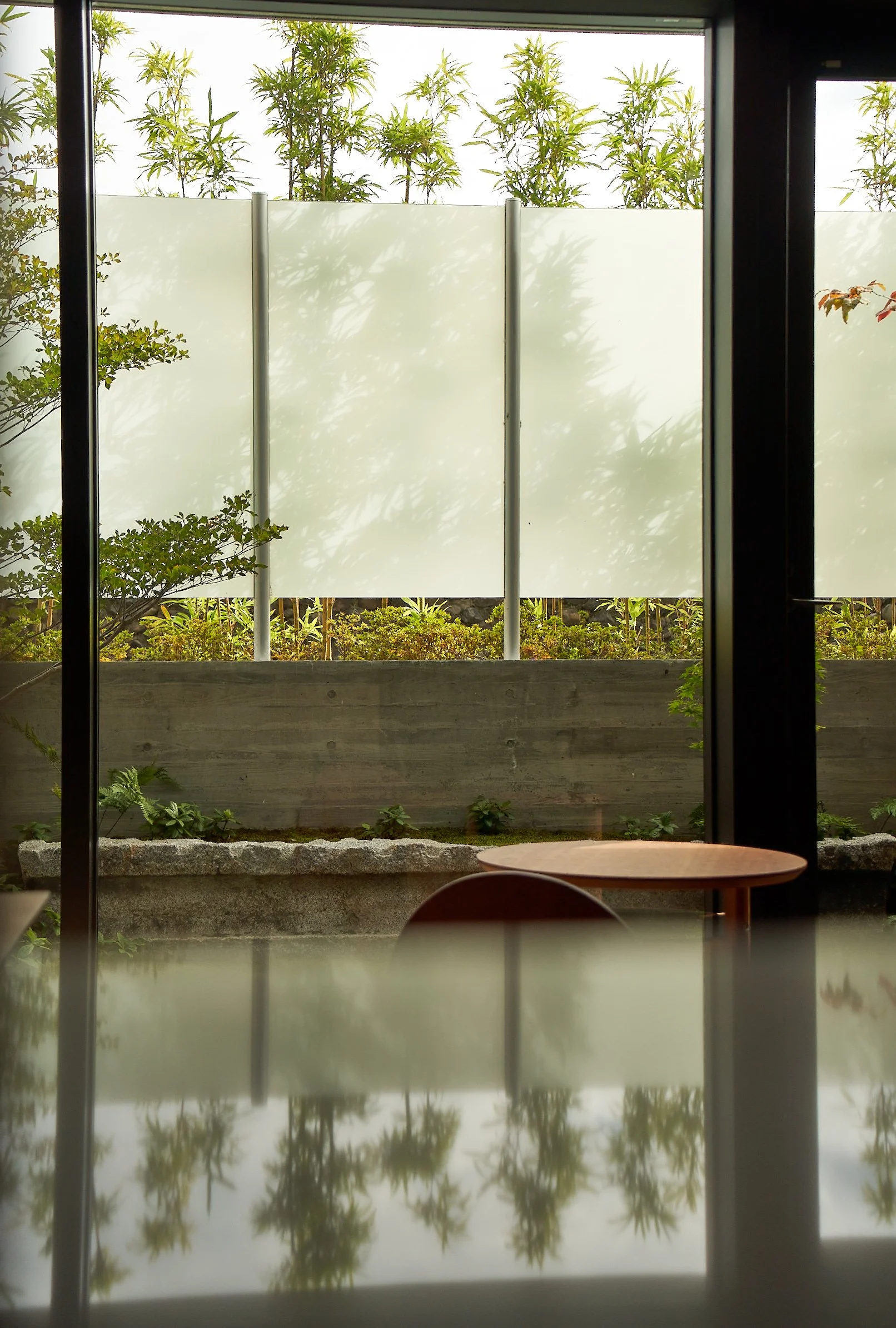Unveiling Genji Kyoto - Heian Elegance meets Modern Design
Have you ever stayed in a hotel that is not just a place to sleep, but a story to be lived? Where every view, material, and detail is part of a deeply woven narrative? At Genji Kyoto, this isn’t just an ideal - it’s the very foundation of our design.
In this behind-the-scenes video, our chief designer and architect, Geoffrey Moussas, unveils the concept and shares his passion for crafting an authentic Japanese experience. We invite you to watch the full video and, as a preview, explore the key philosophies that make our hotel a unique sanctuary in the heart of Kyoto.
From Machiya to the Tale of Genji: Evolution of a Concept
The story of Genji Kyoto begins with the site's original footprint. The project was initially inspired by the traditional Machiya townhouses that once stood on the property. While the original structures were too far gone to restore, Geoff decided to instill the new-built with the essence of Machiya design.
But another source of inspiration emerged from the soil of history. "We learned that this is the location where a lot of The Tale of Genji took place," Geoff reveals. This consideration shifted the hotel's design theme from the Machiya prototype to the poetic world of the Heian period, over a thousand years ago.
The goal was not an imitation of the architecture of the time, but a distillation of its aesthetic and spatial world - the world of Shinden Zukuri (寝殿造) style, characterised by pavilions nestled within interconnected gardens.
Teioku Ichinyo (庭屋一如): Where Building and Garden Become One
At the heart of Genji Kyoto is the ancient Japanese principle of Teioku Ichinyo - the idea that the garden and building are so inextricably linked they become a single, harmonious entity.
One can experience this upon entering the hotel lobby with the serene Ukifune Garden, which is a karesansui (枯山水) dry garden, more generally known as a Zen Garden. "It's hard to tell where the building ends and where the garden begins, and vice versa," Geoff notes.
This seamless connection continues into every guest room, where private pocket gardens blur the line between interior and exterior, culminating in a rooftop Sky Forest Garden that is like a hermitage within the city.
Central to the experience of the lobby Zen garden is the engawa (縁側), the traditional veranda ribboning a Japanese house or temple. As Geoff explains, this "interstitial space" was where much of Heian-period life unfolded. It is a specifically Japanese construct, designed for contemplation and connection with nature.
Materiality and Craft: A Modern Homage to Tradition
Authenticity is felt not just in space, but in substance. Genji Kyoto is a testament to the beauty and benefits of natural materials and master craftsmanship.
Wood & Tatami: Guest rooms feature solid cherry wood tables and floors, complemented by tatami mats made from all-natural rush.
Innovative Concrete: We contrasted standard Japanese concrete with a unique, softer cedar-board-formed concrete, creating a tactile dialogue between textures.
Artistic Washi: Renowned washi artist Eriko Horiki brings traditional Washi paper to life in an architectural context. In our lobby, a five-layer washi installation embedded with silver chips creates a mesmerizing play of light, casting shimmering shadows inside and glowing from the exterior.
The Philosophy of Discovery: Hidden details tell a deeper Story
"A really important feature of architecture... is the details," says Geoff. At Genji Kyoto, discovery is a core part of the guest experience. The hotel is designed in layers, revealing itself over time.
Look closer, and you will find:
The Flow of Water: ceiling lights throughout the hotel echo the rippling effect of the Kamo River, a theme introduced by the entrance water fountain.
Uninterrupted Views: a gentle curve in the ceiling seamlessly hides curtain boxes, ensuring your connection to the mountain or city views remains unbroken.
Bespoke Comfort: Nearly all furniture is custom-designed for the hotel, with one notable exception: the iconic Panton chair, specially selected for the comfort it provides as low-level tatami seating.
An Artistic Challenge: Even the functional fire safety system became an opportunity for beauty. The required smoke screens are concealed within a vibrant, patterned ceiling, turning a technical challenge into one of the hotel's most intriguing features.
An Invitation to Your Own Story
With 19 unique rooms, each offering a different view and experience, Genji Kyoto is designed so that "every time you come back, you'll have a different experience."
We invite you to watch the full video to delve deeper into the vision and craftsmanship that shaped this one-of-a-kind hotel. Discover a place where history is not just remembered, but felt; where design is not just seen, but experienced.

